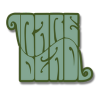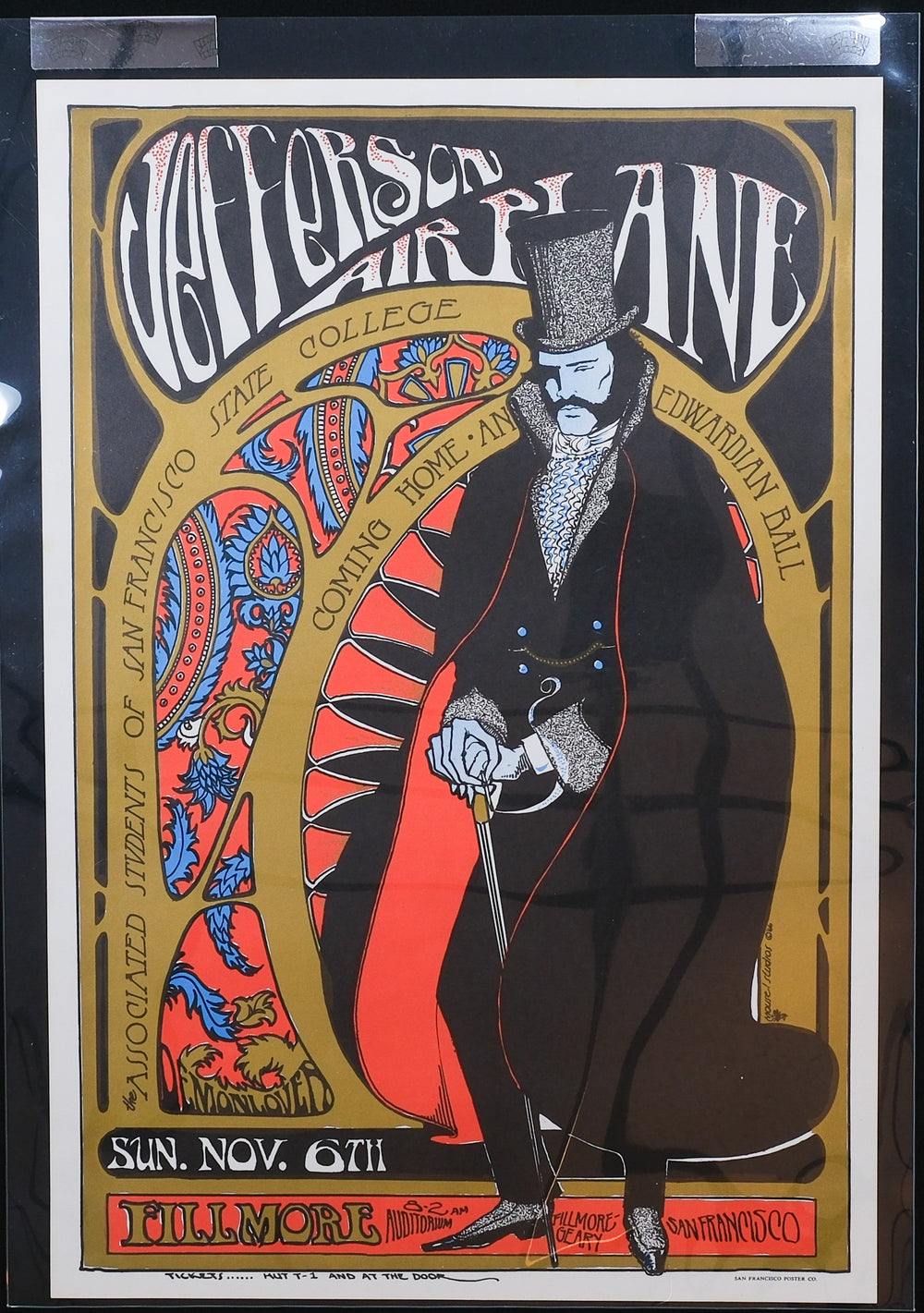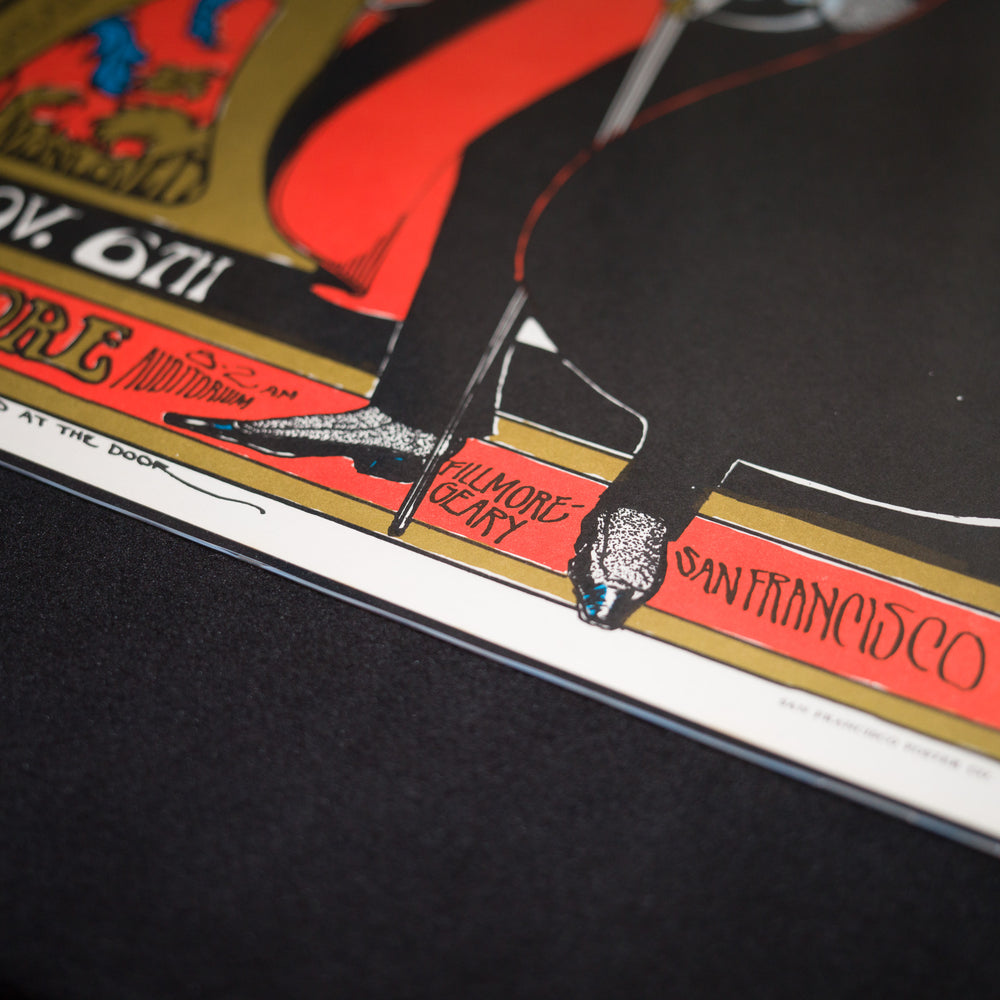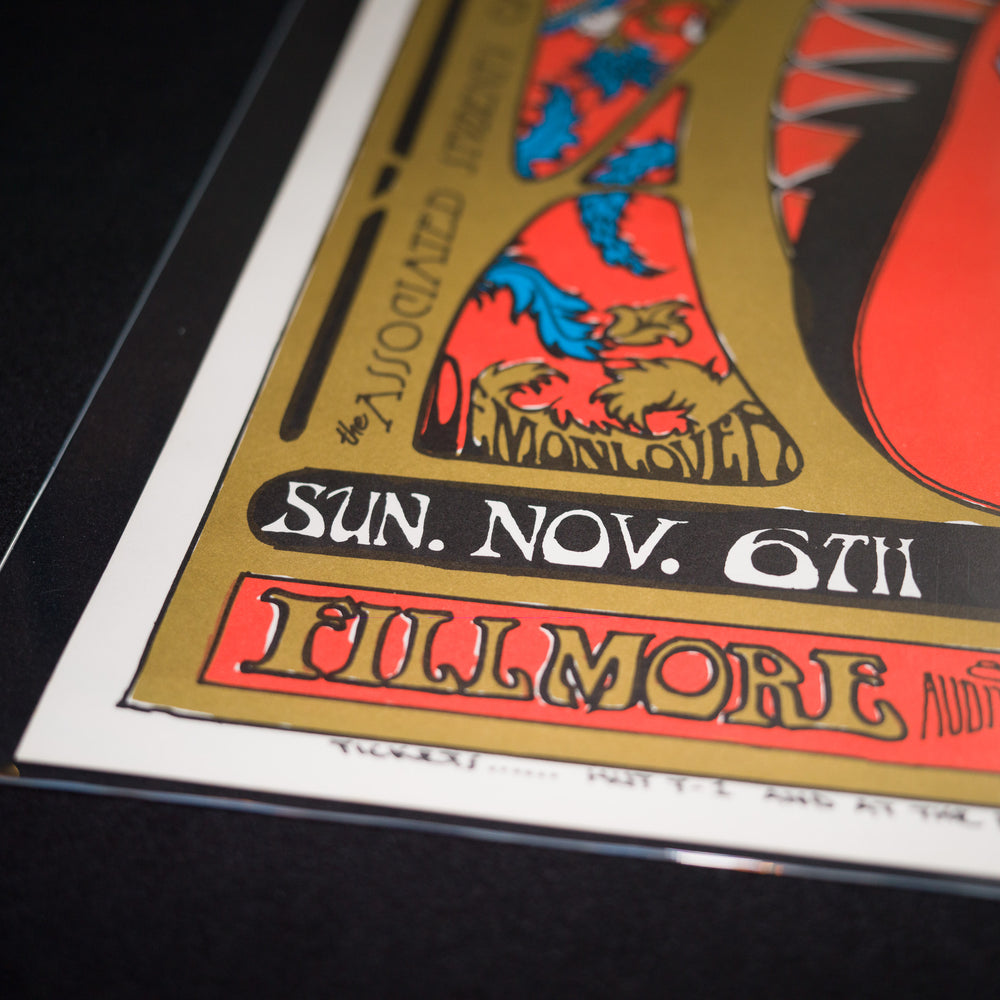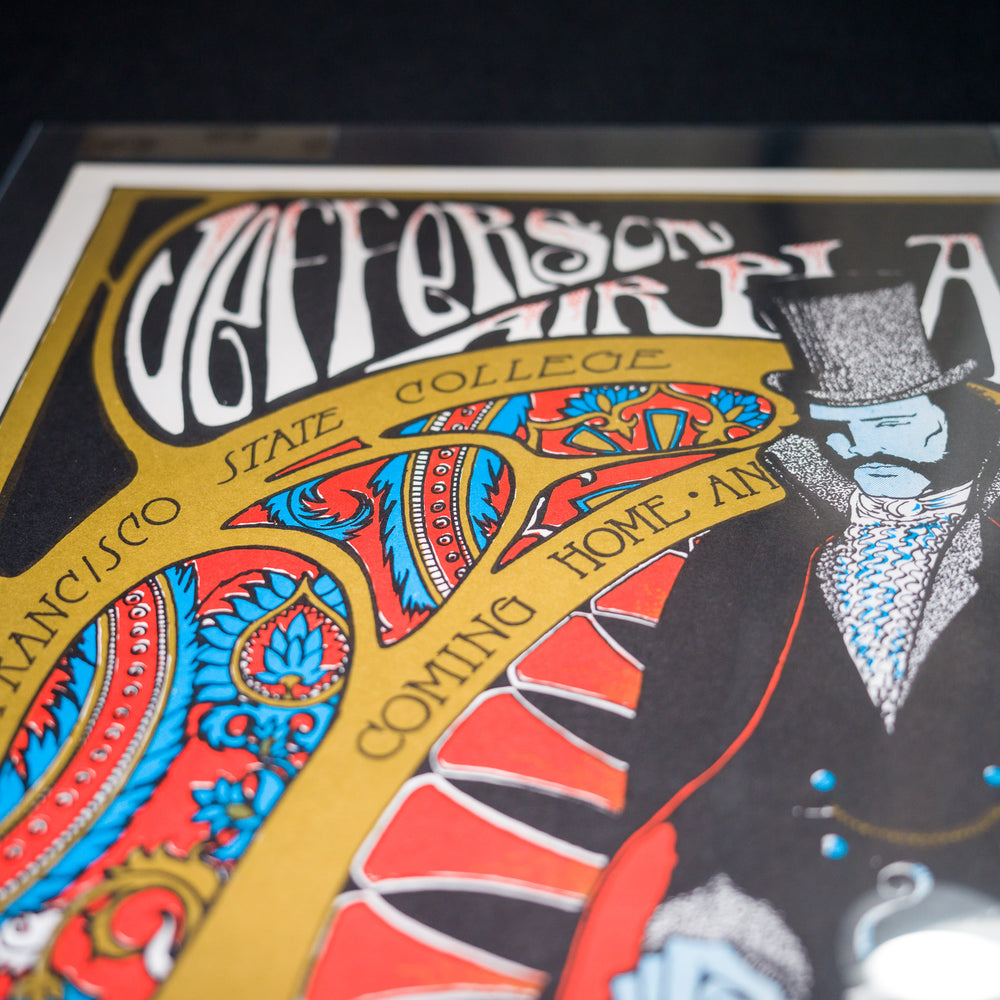Introduction
Stanley Mouse's 1966 Fillmore poster for Jefferson Airplane is a quintessential piece of 1960s rock and psychedelic art. Stanley Mouse, along with his collaborator Alton Kelley, was a key figure in the San Francisco psychedelic art scene, and his work for the Fillmore Auditorium is particularly iconic. This poster, created for a Jefferson Airplane concert, captures the essence of the era with its distinctive style.
The poster features hallmark elements of Mouse's work, including vibrant colors, fluid forms, and imaginative typography. The imagery often includes whimsical, surreal elements that are reflective of the psychedelic experience, aligning perfectly with the spirit of Jefferson Airplane's music. The band, known for their pivotal role in the psychedelic rock movement, was at the forefront of the San Francisco music scene, and Mouse's artwork visually echoes their innovative sound.
Key Features
- Artist: Stanley Mouse and Alton Kelley
- Year: 1966
- Edition: AOR 2.81 San Francisco Poster Company RP-2
- Numbering: NA
- Signature: NA
- Dimensions: Approximately 18" x 24"
- Material: Screen Print
- Venue: The Fillmore Auditorium
The Artists: Stanley Mouse and Alton Kelley
Stanley Mouse and Alton Kelley formed one of the most influential partnerships in the world of psychedelic art, particularly in the San Francisco rock scene of the 1960s. Their collaboration began in the mid-1960s and quickly became a defining force in the visual culture of the era, heavily influencing the aesthetic of the burgeoning psychedelic music scene.
Mouse and Kelley met in San Francisco and found common ground in their shared interest in art and music. They began working together, combining their talents to create posters for concerts at venues like the Avalon Ballroom and the Fillmore Auditorium. Their work was characterized by its vibrant colors, intricate designs, and fusion of various artistic influences, including Art Nouveau, surrealism, and contemporary pop culture. This blend resulted in visually stunning and iconic images that perfectly encapsulated the spirit of the bands they promoted, such as the Grateful Dead, Jefferson Airplane, and Janis Joplin.
The Band: Jefferson Airplane
Jefferson Airplane was a cornerstone of the 1960s counterculture movement, emerging from San Francisco's vibrant Haight-Ashbury district as a leading force in the burgeoning psychedelic rock scene. Their electrifying live performances and genre-defying sound captivated audiences worldwide, while their music resonated deeply with the era's progressive ideals and anti-establishment sentiments.
The band's original lineup consisted of Marty Balin (vocals), Paul Kantner (guitar, vocals), Grace Slick (vocals), Jorma Kaukonen (lead guitar), Jack Casady (bass), and Spencer Dryden (drums). Their music, a mesmerizing blend of folk, blues, rock, and psychedelia, perfectly captured the zeitgeist of the time, blending musical experimentation with profound social commentary.
Their debut album, "Surrealistic Pillow" (1967), propelled them to mainstream acclaim, with the hit single "White Rabbit" becoming an anthem for the counterculture movement. Other notable tracks like "Somebody to Love" and "Today" further cemented their status as psychedelic pioneers, showcasing their ability to weave intricate melodies, soaring harmonies, and thought-provoking lyrics into a captivating sonic tapestry.
Throughout the late 1960s and early 1970s, Jefferson Airplane continued to release critically acclaimed albums, including "After Bathing at Baxter's" (1967), "Crown of Creation" (1968), "Volunteers" (1969), and "Bark" (1971). Their music evolved seamlessly, seamlessly blending their signature psychedelic sound with elements of hard rock, jazz fusion, and even country, reflecting their artistic restlessness and desire to push the boundaries of musical expression.
The Venue: The Filmore Auditorium
The Fillmore Auditorium was a legendary venue that played a pivotal role in shaping the vibrant counterculture movement of the 1960s. Located in San Francisco's Haight-Ashbury district, the Fillmore became a beacon for the city's burgeoning psychedelic rock scene, hosting countless iconic performances by some of the most influential bands of the era.
Established in 1965 by legendary rock promoter Bill Graham, the Fillmore was a former movie theater transformed into a pulsating hub of musical energy. Its intimate atmosphere, with a capacity of just over 2,500, created an electrifying connection between the performers and the audience, fostering a sense of community and shared experience that resonated deeply with the counterculture ethos.
The Fillmore's roster of performers was a who's who of 1960s rock legends. From the psychedelic pioneers of Jefferson Airplane and the Grateful Dead to the blues maestros of Muddy Waters and Howlin' Wolf, the Fillmore stage hosted a diverse array of talent that reflected the era's eclectic and rebellious spirit.
The Fillmore's impact extended beyond its musical offerings. The venue became a cultural epicenter, hosting poetry readings, political rallies, and other events that fueled the social and political movements of the time. It was a place where activism and art converged, where music and free expression reigned supreme.
